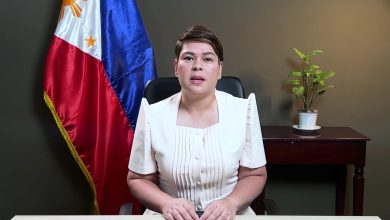For hundreds of centuries now, the vastness of the ocean only bounded by the azure skies has always been part of the existence and way of life of the Filipinos—from the early settlers to the present day.
Not only this vast frontier lying throughout the entire archipelago had bear witness to the Philippines’ deep-seated past but had also sparked in our DNA the unique inclination to sailing across destinations and exploring new grounds.
Marian Pastor-Roces, curator of the Philippines’ ‘Bangkota’ Pavilion at Expo 2020 Dubai, explained that our natural mariner’s instinct as a people began more than 4,000 years ago, when the early inhabitants of the Philippines had embarked on a ‘great movement’ to the various parts of the world using ‘bangka’ (boats). This journey has not waned in succeeding millennia, as manifested by the phenomenal rise of the overseas Filipino workers (OFWs) who work as seafarers.
This depth of our ongoing journey as a people and the extent of how far our nation has reached since that ‘great movement’, which is being presented as akin to a family of coral reefs spreading through the world’s oceans and seas, will amaze visitors at the Bangkota pavilion. These are poetically presented through the striking works of art by some of the most globally recognized Filipino artists in the Bangkota pavilion.
“The ‘Bangkota’ tells the story of population movement, one that begins 4000 years ago, when the Austronesian-speaking people started moving on boats into Batanes and southwards to populate the Philippine and then Indonesian archipelagos. These same ancestors moved to populate the entire Pacific Ocean and reached as far as the Madagascar. Boats have been central to this reconstruction of our archaic past,” said Pastor-Roces.
Art weaves our past
Pastor-Roces is no stranger to pavilion curatorial task. She had curated three of the country’s pavilions back in 2006, 2008 and 2010 – two of which won awards as ‘Best Designed Pavilions’. This time, Pastor-Roces shared that Architect Royal Pineda’s plan for the pavilion’s visual designs was to collaborate and work with Filipino artists.
Pineda’s firm, Budji+Royal+Architecture+Design, has been tasked to design the entire pavilion to represent the Philippines at the ‘Sustainability District’ of the Expo 2020 Dubai.
“It was Architect Royal Pineda’s a priori plan to work exclusively with artists. This early decision shifted my curatorial task into new direction,” shared Pastor-Roces.
She added, “In the past Expos, I worked essentially with a conceptual artist to provide the approach to the entire interior space that my previous partner architectural and graphic design team executed with scenographers. In this pavilion, curation involved artist selection, each with exciting current practices, and to create collaborations. In these collaborations, the artists are asked to use their own aesthetic languages to poetically express scientific data.”

Precisely Filipino
The official curator of the Philippines’ ‘Bangkota’ Pavilion hopes that the Filipinos will see the intrinsic positive values of our people in the ‘Bangkota’.
“The pavilion is conceptualized to assert that Filipinos do not have to prove anything in front of the world. The world already knows that the Philippines is a creative and dedicated powerhouse: each and everyone of us,” said Pastor-Roces.
“Blue-collar work is proud work, just as much as creative, care-giving, seafaring, and technological work are proud work. Not only are the contributions of all segments of our society equally valuable —but the similarity with which we approach all work is noteworthy: with compassion; with extraordinary attention to detail; with a grasp of systems; with a passion (obsession!) for connectivity; and with creativity. The pavilion celebrates all these similarities as, precisely, Filipino,” she added.
Artistic vision
The ‘Bangkota’ is divided into several areas that each mark a different yet interconnected visual experience for the visitor.
High ceilings, towering sculptures, massive screen projections, and art walls are only some of the various forms of art that will comprise the 1,386-square-meter pavilion.
“It is in the overall architecture and curation that expatriate Filipinos will find their surprising, new reflection as world citizens. The artworks —most of which are large sculptures, each occupying entire galleries with unusually high ceilings —are distinct physical experiences. But these experiences are curated to be one huge experience together, after the visitor moves from one to the other space, taking in combinations of video mapping and other projections with sculptures, and other surprises,” described Pastor-Roces.
In this deftness with marrying technology and sculpture, she said, “the pavilion presents a cosmopolitan Philippines that is also clear-eyed about its emergence from the deepest past,”
She is optimistic that Filipinos who will get to visit the pavilion when it opens this October will be thrilled to discern the story of how their ancestors asserted cultural sustainability with strong resilience that formed and molded the contemporary Filipino culture.
“Both Royal Pineda and I hope that Filipinos and expatriates will be enchanted by a pavilion wherein artists, one after another, evoke aspects of the Philippine experience, using their own distinct approaches to materials and content,” said Pastor-Roces.
The total experience, she stressed, is a complete departure from “diorama” approaches; instead, the music, digital technology, sharply defined forms, images, and so forth work together marvelously.




